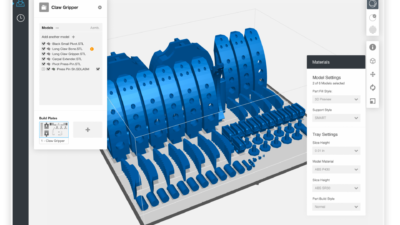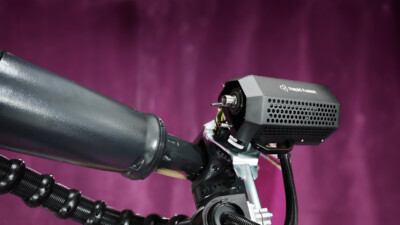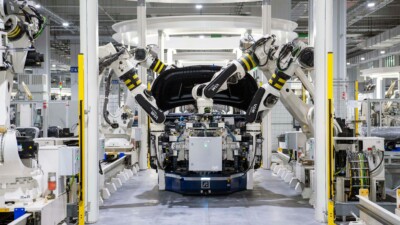The new 3D printing process can use more viscous resins and create stronger parts.

Barcelona-based BCN3D has been developing 3D printing hardware and software since its founding in 2011. On March 2, BCN3D debuted a new resin-based 3D printing technology called Viscous Lithography Manufacturing, or VLM.
VLM represents a breakthrough in 3D printing, with the potential to give users complete control over every stage in their additive manufacturing processes, according to BCN3D’s press release. Additionally, as the name suggests, VLM can use resins that are up to 50 times more viscous than those used in current resin-based 3D printers.
What Is VLM and How Does It Work?
BCN3D’s patented VLM process is similar to other resin-based 3D printers, but with one big difference: the amount of resin used in each step. VLM works on thin layers of photopolymer resin, one at a time, rather than an entire vat of resin at once. The thin layers are transported from a material reservoir by a transparent film and then hardened with UV light.
In the VLM process, a roller first picks up the resin from the reservoir and laminates it on the underside of the transparent film. The resin-coated film then moves to the printer’s build chamber and the build plate rises up to meet it. UV light then hardens the resin in the appropriate shape, and the build plate lowers to peel the resin from the film. Any excess resin is recirculated into the material reservoir, which cuts down on wasted resin, according to BCN3D. The film returns to the material reservoir and the process repeats itself.
Advantages of VLM
On the surface, this new process might not seem particularly beneficial. But the VLM approach has several distinct advantages. Because resin is not required to flow into place, VLM printing allows for much higher resin viscosities than current printing methods. BCN3D says this will enable the use of new resins that are stronger and less brittle. These resins can be made even stronger with the use of additives.
The VLM process also makes it possible to implement multi-material 3D printing. With a second film mechanism and resin reserve, VLM can introduce different material layers without cross contaminating the different resins.

Another advantage of VLM is that it decouples build volume from the size of a resin vat. The limiting factor in VLM is the size of the LCD light screens for hardening the resin.
“If 3D printing is to be the future of manufacturing, and what leads us towards local production, customization, control of supply chains and sustainability, all the players in the industry should be pushing in this direction,” said BCN3D CEO Xavier Martínez Faneca in the press release.
Where VLM Has Been Tested
BCN3D is in the process of commercializing VLM, but several test cases already show the potential of the technology. Motorsports team Prodrive used VLM to print parts for its high-performance off-road racer competing in a two-week challenge in Saudi Arabia. The harsh conditions of the desert required strong resins. Prodrive used VLM to produce the rear light trim on its prototype racecar, and the parts proved to be highly durable in the extreme conditions of the race, according to the company.
“So far it looks very promising, and I predict we’ll be using VLM for all our polymer additive manufacturing before long,” said Callum Harper, design engineer for Prodrive.
Glass manufacturer Saint-Gobain has also been taking VLM for a test-drive. The company needed a quick fix after discovering a problem in over 7,000 of its robotic machines that position and weld wire for defogging systems. Saint-Gobain solved the problem in seven days using VLM to fabricate 7,000 position fixtures at a cost of €0.79 per part, according to the BCN3D press release.
“By currently having this implemented in the production line, the efficiency has already increased by an estimated annual savings of €70.000,” said Miguel Lascuevas, tempering & soldering manager for Saint-Gobain.
What’s Next for VLM?
BCN3D plans to fully commercialize its new technology. The company is seeking partners to begin testing the process and discovering new ways to tap its potential. BCN3D has begun a VLM technology adoption program and is actively inviting companies to apply.
“What we want with such a new technology is to get information from the market,” said CEO Xavier Martínez Faneca to PMM. “Until now, I would say that we have been able to adapt this technology to all the applications that we have been trying internally. But now the important thing is to get information from the actual users of 3D printing.”



